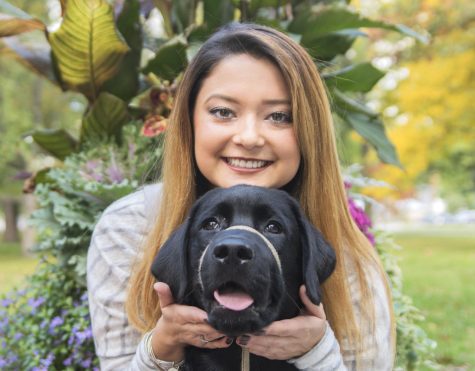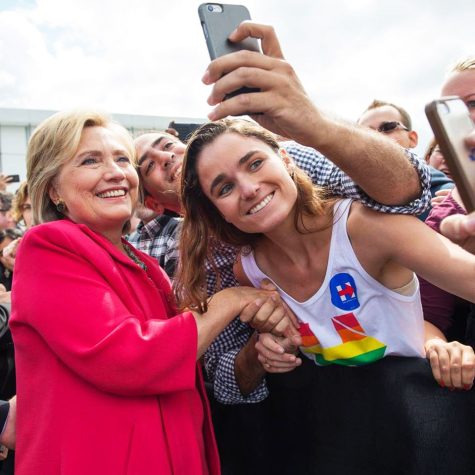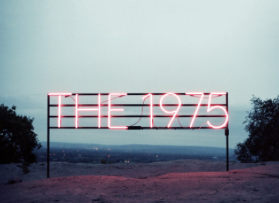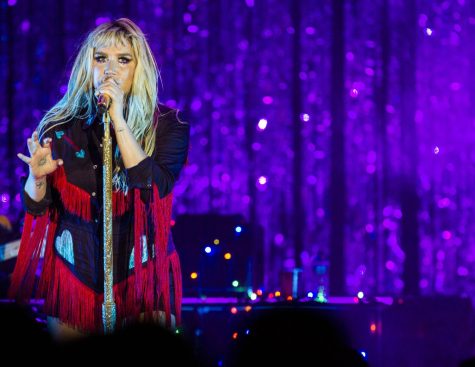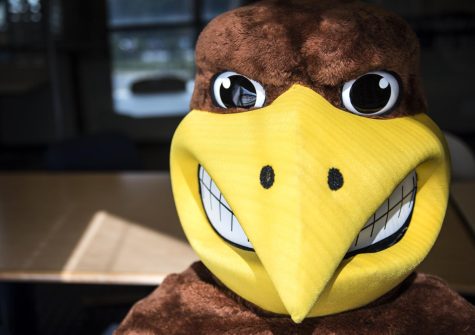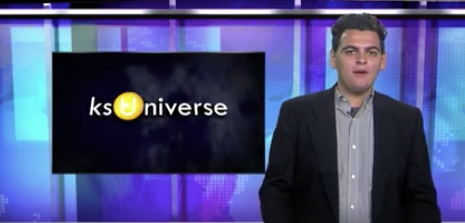Sixties-era ‘magic’ bus brings vintage vibes with new bands to Kent
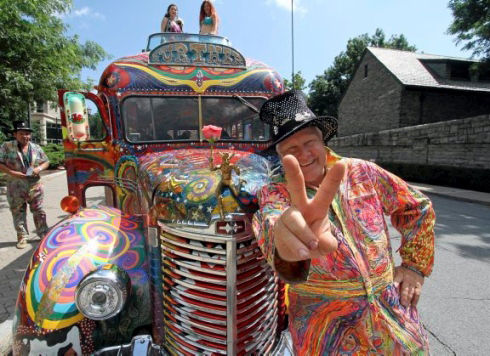
Submitted Photo
September 9, 2014
They were called the Merry Pranksters. Led by Ken Kesey, author of One Flew Over the Cuckoo’s Nest, the rag-tag, counter culturists traveled the United States Indian-dressed and seeking creative fulfillment fueled by LSD. But Kesey’s crew needed transportation, and found it in the form of a 1939 International Harvester school bus. They called it “Furthur,” and the Pranksters soon made history.
And just as Kesey’s vibrantly-painted bus made its way throughout America, it drove its way into 1960s culture. It is the subject of Tom Wolfe’s novel The Electric Kool-Aid Acid Test. It’s freewheeling spirit influenced the Beatles’ “Magical Mystery Tour,” the Who’s hit “Magic Bus,” and the Grateful Dead immortalized the vehicle in one 1967 song: “The bus came by and I got on, and that’s when it all began.”
This Monday, Sept. 15, Kesey’s bus will stop in Kent, marking the 50th anniversary of the original trip aims to rekindle the same spirit as it did in the past, albeit with a fresh paintjob.
As the sixties came to an end so did the use of the bus that carried along with it a decade. After a couple of arrests for marijuana possession in 1965 and 1968, Kesey lost fuel for ecstatic wanderings, and the once 30-strong group of Pranksters disbanded. After years of debauchery and FBI run-ins, Furthur made its last stop at the Woodstock Music Festival in 1969. Once the seventies hit, the bus was forgotten.
After retiring to a farm in Oregon, Kesey made a few attempts to bring the spirit of Furthur back to life, mainly through an ill-attempt at mimicking the same vehicle driven in ‘64, calling it “Furthur 2,” but the experiment didn’t suffice. Before Kesey died in 2001 at the age of 66, he was asked about Furthur and the initial purpose of the road trips.
“What we hoped,” he said, “was that we could stop the coming end of the world.”
It turns out, the world didn’t end. And neither would the “magic” of the bus.
In October of 2005, Zane Kesey, Ken’s son, found the 60-year-old Harvester rotting away in a swamp outside his father’s Oregon home, covered in blackberry vines. Along with his friend Derek Stevens, Zane decided to revitalize Furthur, repaint its exterior and find new “Pranksters.” After severe engine maintenance and a 21-century makeover — there’s now Wi-Fi and a full recording studio — Zane readied his father’s bus for a new era, along with the same colorful panache.
And this year marked a new journey. Taking off from Oregon in early July, Zane and his tie-dyed crew have traversed the States to music festivals and historic venues with support from new bands with good vibes. They’ve already hit up Scranton, Pennsylvania, the Werkout Festival in Thornville, Ohio and stopped by Woodstock for a 45th-year reunion. Kent is appropriate as a city as any to hit the brakes, tour leaders said.
Stevens — who has been trading off the driver’s seat with Zane — said that Kent is a likable place to host the tour, as rooted in the “infamy” sparked from the May 4th protests.
“As to Kent state, the freedoms of expression and thought that the bus represents lent those same ideals to the anti-war movement,” he said in a recent press release.
Zane, often sporting a Day-Glo jump suit, Uncle Sam top hat and neon-framed glasses, said that he’s looking forward to making his way to a historically liberal city.
“(We) have been crossing America on its journey,” he said, “and the reception in Ohio has always been tremendous.”
Joining Zane and Stevens and their new Pranksters are bands Aliver Hall and Big Leg Emma, both vetted for jam-band quality and ability to match the musical soundtrack that followed the original Furthur back in 1964. Both bands, with their long, improvised guitar solos and light-show accompaniments, seem to fit as a musical soundtrack to the new Furthur just as the Grateful Dead did back in the sixties.
Aliver Hall, a “groove-based” jam band from Akron promises to put their “Deadhead” influence to good use. Bassist Jim Garibaldi said that the band’s number one musical inspiration ties in well to the cultural tradition that Zane’s caravan is rekindling.
“It’s capturing a moment of sixties nostalgia that everyone knows about, that everyone thinks is so cool,” he said. “Just to be a part of something like this is crazy — it’s definitely something out of the norm for us.”
Garibaldi, who has been living in Kent for the past ten years, said that bands like Aliver Hall and Big Leg Emma work off a similar model as the first jam bands forty years ago. They aspire to the same familial-type atmosphere of peace and love as the original Deadheads did during the Vietnam Era. Jam bands nowadays, Garibaldi said, would be nothing without the most essential part of their show: the audience.
“We kind of exist because of the people that come and see us,” he said. “Otherwise we’d kind of just be sitting in our basements and playing alone.”
That spirit that the reawakened Furthur carries with it as it travels across the country — the crowd’s love and support, the connection and communion with fans — is the same that unites veteran and experienced bands alike, with Kesey and the Deadheads as the prophets.
If anything, celebration is necessary to keep the jam band scene going, Garibaldi said, and it helps to have numbers. Without it, the spirit and music sparked in the sixties, may fade.
“It’s very fragile,” he said. “It has to be kept alive.”
Contact Mark Oprea at [email protected].












